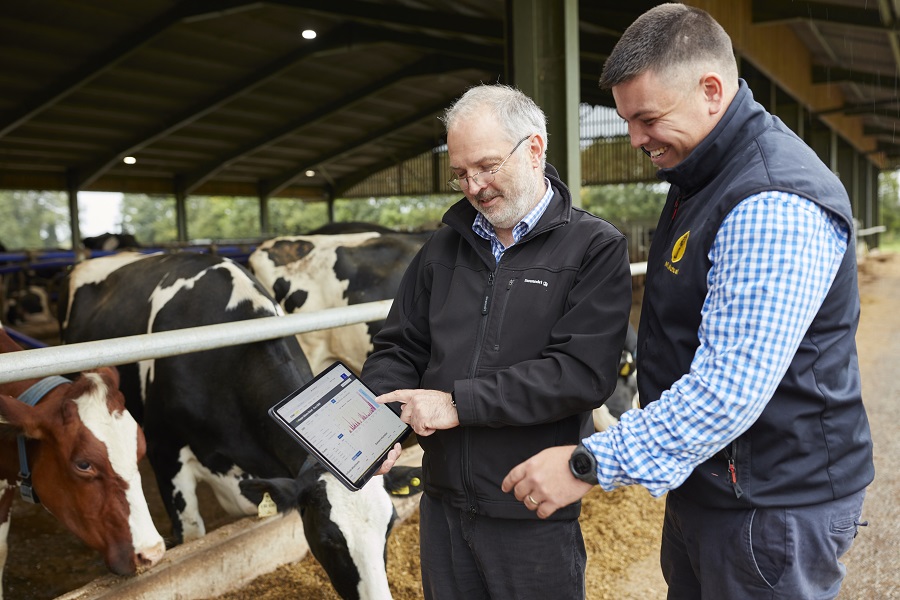Technologies that are re-shaping farming

From robots that can precisely eliminate weeds, to GPS collars on cattle, and even software using artificial intelligence to track biodiversity, forward-thinking farmers up and down the country are adopting new technologies to help secure the future sustainability of their farms.
Innovations in Agri-Tech are being developed by industry at speed. Here is a glimpse at just some of the ways farmers are embracing technology to make a difference.
Helping make farming greener
The race is on to develop feasible alternatives to diesel-powered machines tractors - ranging from electric tractors to machines powered by Hydrotreated Vegetable Oil (HVO), hydrogen or biomethane - in an attempt to help farmers to reduce emissions, whilst also potentially saving on costs.
Technology is also being used to help farmers monitor and encourage wildlife on their land. An example of this is a system called Chirrup, which uses artificial intelligence (AI) to identify individual bird species from recordings of the dawn chorus. One farmer in Godminster told BBC News it was an affordable way of measuring farm diversity on a regular basis.
Robotic and autonomous machinery
Whilst it’s still in its infancy, some farmers are already using robots to tackle tasks such as planting, weeding and harvesting.
For instance, Lutton Farm, a fruit farm located on the border between Cambridgeshire and Northamptonshire, is among early adopters of a robot that supports pickers by transporting empty trays to them, collecting picked produce from pickers, and delivering it to any collection point that is in transit or static.
Boosting safety, tackling crime and aiding diversification
Some new technology could play a crucial role in making farming safer. After all, the farm can be a dangerous place. For example, on-vehicle cameras can monitor dangerous areas and remotely stop the machinery if someone gets too close.
Another example of an emerging technology to help reduce accidents on farms is from our very own Farm Safety Foundation. The Farm Safety Foundation have developed and have actively been using virtual reality as an integral part of their farm safety training sessions since 2020. Furthermore, this innovative way of learning is available to agricultural students at all land-based colleges across the UK.
Farmers are also making use of technology to tackle rural crime. At its simplest this can mean tracking devices and immobilisers for vehicles. But also, the likes of livestock tracking devices that can alert farmers of theft or dog attacks, remote tank monitors for fuel, chemicals or fertiliser, and sensors for farm gates.
Technology is also helping farms diversify. For example, Flanesford Priory in Herefordshire used mapping and precision farming software to help create a popular maize maze to entertain paying guests.
Precision agriculture
Originally designed to drive efficiencies and enhance productivity, the primary focus of many precision software applications lies in optimising crop yields and aiding in farm management decisions by utilising an array of sensors, robotics and technology. This is a far-ranging field that has been developing for years now, but examples include machines that use high-resolution cameras and computer vision software to identify and kill weeds.
But it’s not just arable farms that can benefit from precision technologies: in livestock farming, precision agriculture spans technologies such as electronic IDs and weighing systems, GPS collars to track cattle movement, and wearable activity monitors.
The developments in technology are too wide-ranging to cover in one article. And none can be expected to offer a magic wand to fix the volatility, uncertainty and instability that all farmers must overcome. But farmers that embrace the right technology for them, can help make their farming business more sustainable, improve productivity and overall resilience.
Underinsurance - make sure you're covered
We’ve explored a wealth of new innovations throughout this article, and for the most part, technology is getting more affordable and accessible to many more people. But in some emerging fields, costs can swing rapidly depending on manufacturing capacity, the cost of raw materials, or even trade disputes and exchange rates.
It is always worth regularly reviewing what it would cost to buy new replacements for your assets, rather than relying on it to be the same price as you paid. Given the demand of the used market, you can't always rely on that as a source of replacements as many did pre pandemic.

If you’re thinking of adopting new technology on your farm, we’d encourage you to speak to your local agency office, either by requesting a call back or by finding your local agency office.